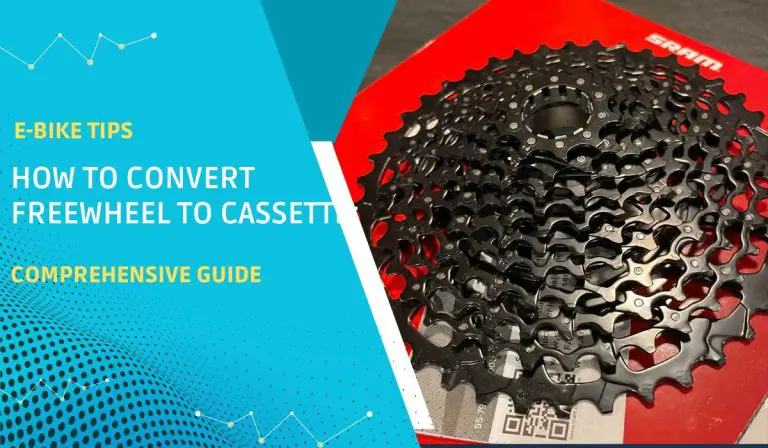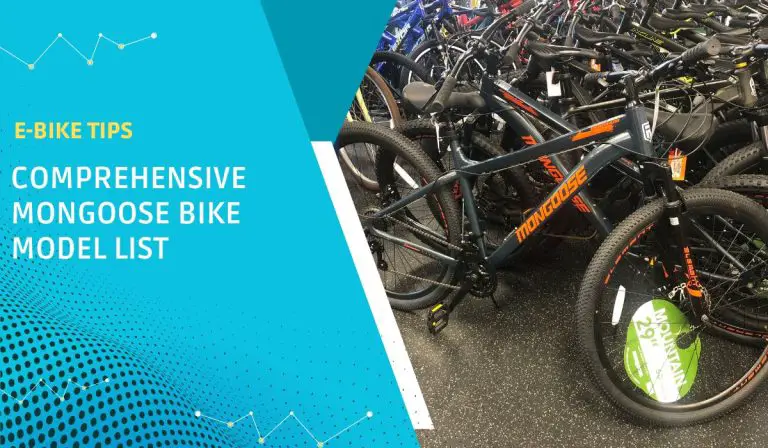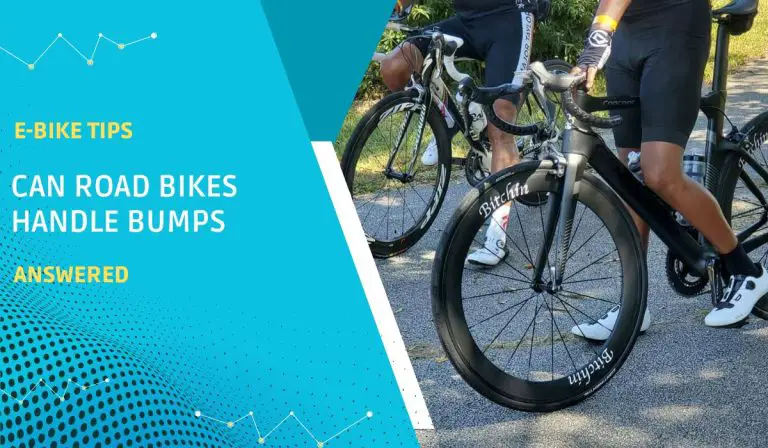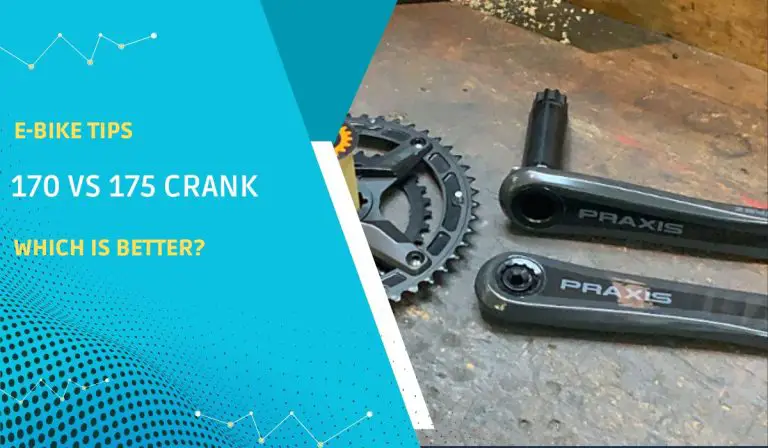No, you cannot convert a freewheel to a cassette. However, to convert your bike from a freewheel to a cassette, you must purchase a new wheel compatible with a cassette. You must also purchase a new cassette and a lockring tool.
I had an old road bike that I had been using for commuting. It had a 7-speed freewheel, which was fine for getting around town, but I wanted to upgrade it to do more serious cycling. I converted it to a 10-speed cassette to give me more gear options and simplify shifting. I removed the rear wheel and freewheel and installed a new 10-speed cassette. I also had to adjust the rear derailleur to shift smoothly between the gears. This improved my bike’s performance.
Since I was happy with my conversion, I will share tips on properly converting your bike from a freewheel to a cassette. I will also compare the freewheel and the cassette side by side, so you can easily spot their similarities and differences. So, let’s begin!
Skip To Section Here
How to Convert Freewheel to Cassette
If you are considering converting your freewheel to a cassette, ensuring your bike is compatible with a cassette is important. You can do this by checking the hub of your rear wheel. You will often need to replace the hub before installing a cassette.
Converting a freewheel to a cassette is a relatively simple process, but having the right tools and following the instructions is important. If you are uncomfortable doing it yourself, you can take your bike to a bike shop and have them do it.
Here are the steps on how to convert a freewheel to a cassette:
Step 1: Gather your tools and materials.
You will need the following:
- A freewheel remover tool
- A cassette lockring tool
- A new cassette
- A chain whip
- A torque wrench
- A rag
- A lubricant
Step 2: Remove the rear wheel from the bike.
Loosen the axle nuts on the rear wheel. Use a bike stand or a workbench to support your bike, then pull the rear wheel out.
Step 3: Remove the freewheel.
Use the freewheel remover tool to pry the freewheel off the hub. Be careful not to damage the hub.
Step 4: Clean the hub.
Use a rag and some lubricant to clean the hub. This will help to ensure that the cassette installs smoothly.
Step 5: Install the cassette.
Line up the teeth on the cassette with the splines on the hub. Use the cassette lockring tool to tighten the lockring. Be careful not to overtighten the lockring, as this can damage the hub.
Step 6: Reinstall the rear wheel on the bike.
Make sure that the axle nuts are tightened securely. Test your bike to make sure that the gears shift smoothly.
Reasons for Converting to a Cassette
Converting a freewheel to a cassette on a bike can be a compelling choice for several reasons. Let me show you why someone might consider this conversion.
- Wider Gear Range: One of the most significant advantages of switching to a cassette is the potential for a broader gear range. Cassettes typically offer more gear with varying tooth counts, allowing cyclists to fine-tune their pedalling resistance to match different terrains and riding conditions. This means you can handle steep climbs more comfortably while enjoying higher speeds on flats or descents.
- Smoother Shifting: Cassettes also provide smoother and more precise shifting than freewheels. The design of cassettes allows for smaller gear jumps between each cog, resulting in more seamless transitions when changing gears. This can enhance your overall riding experience by reducing the effort required for shifting and minimizing gear slippage.
- Durability: Cassettes are typically more durable than freewheels, making them less likely to break or wear out easily.
- Compatibility with Modern Components: Many modern bikes and drivetrain components are designed to work with cassettes. You may find limited compatibility options if you have a freewheel-equipped bike and want to upgrade other drivetrain parts. Converting to a cassette opens up a broader range of choices for components like derailleurs, shifters, and chains.
- Ease of Maintenance: Cassettes are generally easier to maintain and replace than freewheels. Individual cogs on a cassette can be swapped out if worn out or damaged, allowing for cost-effective repairs. On the other hand, freewheels often require more complex maintenance or a complete replacement.
- Weight Savings: Cassettes are typically lighter than freewheels. This weight reduction can make a noticeable difference, especially for riders looking to improve their bike’s performance or tackle hilly terrain.
- Upgrade Path: Converting to a cassette can be your bike’s first step in a broader upgrade path. You can further enhance your bike’s performance and overall functionality by replacing other components like the rear derailleur and shifters with cassette-compatible ones.
Conversion Kits
When choosing a conversion kit, consider your budget, riding style, and the specific gear range you need. Higher-end kits offer precision and durability, while budget-friendly options provide affordability. Ensure also to check your bike’s compatibility and assess whether you need additional components beyond the kit.
Here are some conversion kits for switching from a freewheel to a cassette, along with their features, pros and cons, price ranges, and some popular examples.
| Conversion Kit | Features | Pros | Cons | Price Range | Example |
| Shimano Cassette Conversion Kit | Includes a cassette, derailleur, chain, and shifters. Known for reliability and smooth shifting. | Quality components, wide availability, and compatibility with Shimano drivetrain systems | Can be relatively expensive. | $100 to $300 | Shimano 105 R7000 Cassette Conversion Kit |
| SRAM GX Eagle Upgrade Kit | Includes a wide-range cassette, derailleur, chain, and shifter. Designed for mountain biking. | Excellent gear range; durable components; great for off-road riding. | Can be pricey, especially for high-end models. | $300 to $500 | SRAM GX Eagle 12-Speed Upgrade Kit |
| Microshift Advent X Upgrade Kit | Budget-friendly kit with a cassette, derailleur, chain, and shifter. Ideal for those on a tight budget. | Affordable, decent performance, ideal for entry-level riders. | Not as high-end as Shimano or SRAM options. | $80 to $150 | Microshift Advent X 10-Speed Upgrade Kit |
| Box Components: Two Prime 9 Upgrade Kit | Kit with a 9-speed cassette, derailleur, chain, and shifter. Known for simplicity and reliability. | Affordable, durable, and suitable for various riding styles. | Limited gear range compared to higher-speed cassettes. | $80 to $120 | Box Components: Prime 9 Upgrade Kit |
| SunRace CSMX8 Wide-Ratio Cassette | Individual cassettes in various sizes and gear ratios Can be used in custom conversion projects. | Affordable, a wide range of gear ratios, and easy to find. | Not a complete kit and may require additional components. | $40 to $80 (for the cassette alone). | SunRace CSMX8 11-46T Wide-Ratio Cassette |
Freewheel vs. cassette
Below, I have put together a detailed comparison between Freewheel and cassettes:
| Feature | Freewheel | Cassette |
| Gear range | Typically, 7 or 8 gears | Typically, 9, 10, 11, or 12 gears |
| Durability | Less durable than cassettes | More durable than freewheels |
| Efficiency | Less efficient than cassettes | More efficient than freewheels |
| Maintenance | Requires less maintenance than cassettes. | Requires more maintenance than freewheels. |
| Compatibility | Not all bikes are compatible with cassettes. | All bikes with a freehub body are compatible with cassettes. |
| Suitable for | Riders who are on a budget or who do not need a lot of gear | Riders who want more gear range, durability, and efficiency |
How to know which to choose
Ultimately, the best option for you will depend on your individual needs and preferences. Here are some things to consider when choosing between a freewheel and a cassette:
- Your budget: Freewheels are typically less expensive than cassettes.
- Your riding style: If you ride in a variety of terrain, you may want a cassette with a wider gear range.
- Your bike: Not all bikes are compatible with cassettes. If your bike has a freehub body, then it is compatible with a cassette.
Also, for which option might be more suitable for your type of riding style, here is what I recommend:
- Casual riders: If you are a casual rider who does not need a lot of gear range, you should consider a freewheel.
- Mountain bikers: If you are a mountain biker who needs a wide gear range for climbing and descending, a cassette will be a better option for you.
- Road cyclists: If you are a road cyclist who wants the most efficient drivetrain possible, you are better off with a cassette.
- Touring cyclists: If you are a touring cyclist who needs a durable drivetrain that can withstand a lot of wear and tear, the cassette will be good for you.
Conclusion
Converting your bike from a freewheel to a cassette can transform your riding experience. Cassettes offer a wider gear range, allowing you to tackle various terrains effortlessly. Shifting becomes smoother and more precise, eliminating abrupt jumps between gears. This conversion also opens the door to future upgrades, enhancing your bike’s performance gradually.
Whether you’re a recreational cyclist seeking smoother rides or a serious rider craving a versatile gear range, consider the advantages of switching to a cassette.
Thank you for reading.
FAQs
Are freewheel and cassette interchangeable?
No, freewheels and cassettes are not interchangeable. Freewheels are attached to the rear wheel’s hub, while cassettes are mounted on a freehub body. If your bike has a freehub body, you can convert it to a cassette. However, if your bike has a freewheel hub, you cannot convert it to a cassette.
Does cassette tape affect speed?
Yes, the cassette affects speed. Cassettes with more gears give you more precise control over your speed, which can be helpful if you ride on a variety of terrain.
How many speeds can you get with a freewheel?
Freewheels typically have a 7-speed transmission.






